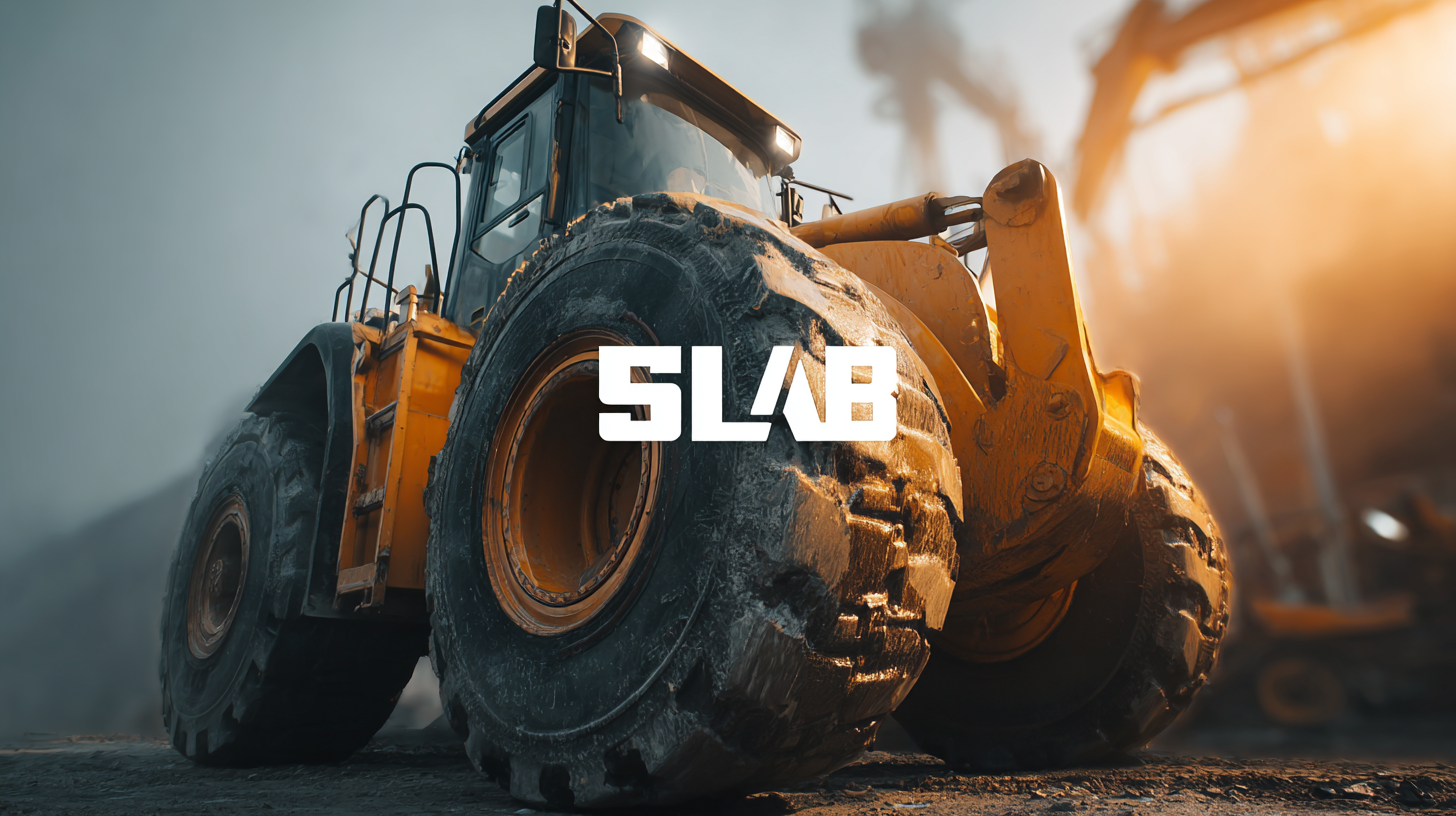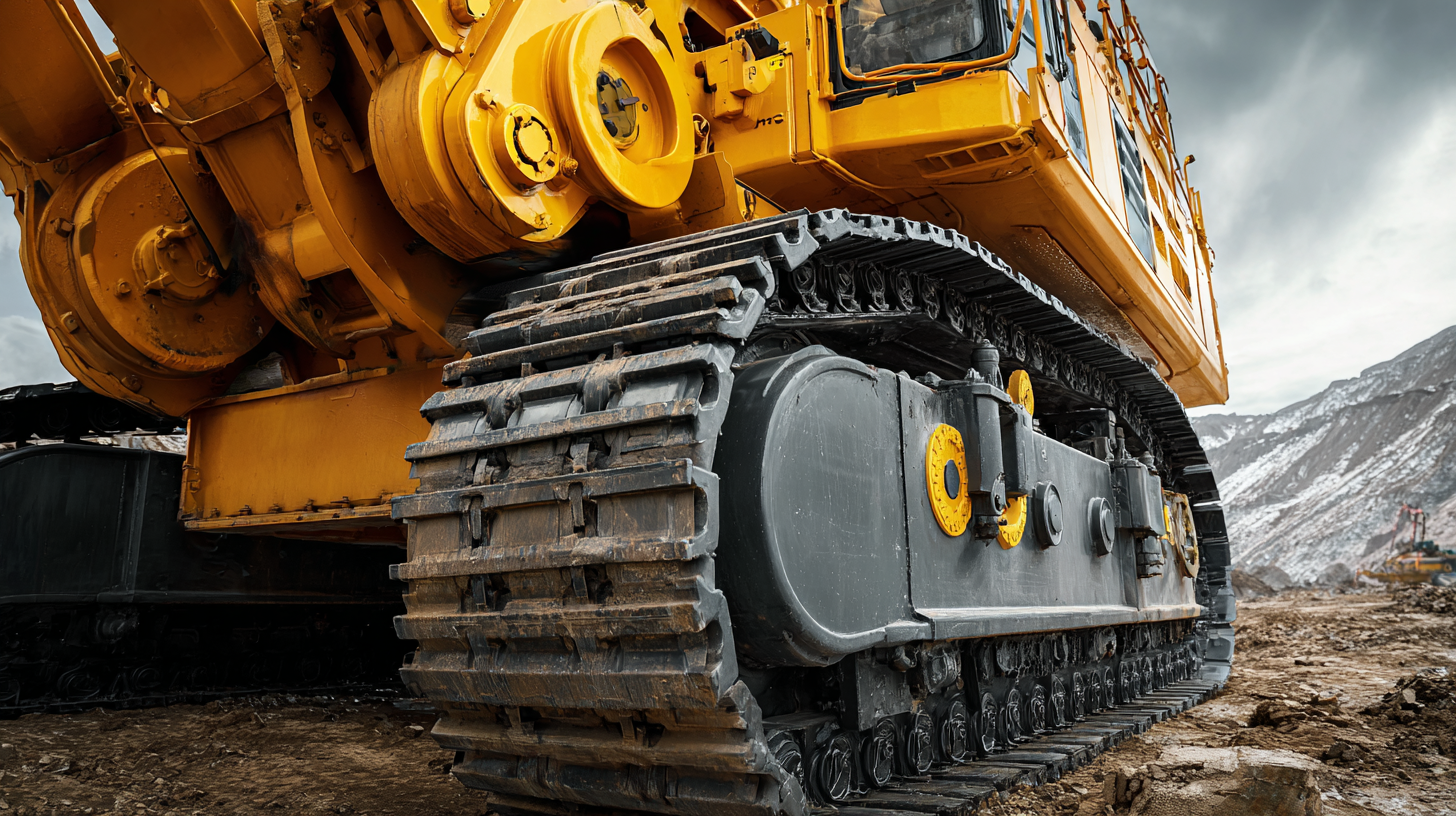
-
Home
-
About Us
-
Products
-
News
-
Blog
-
Contact Us
Leave Your Message

In the fast-paced world of construction, the efficiency and longevity of machinery play a crucial role in project success. According to a report by Technavio, the global construction machinery market is expected to grow by over $100 billion between 2021 and 2025, emphasizing the increasing reliance on advanced equipment. A significant factor in achieving maximum productivity lies in the quality of Construction Machinery Wear Parts. High-performance wear parts not only enhance the operational lifespan of machines but also reduce downtime and maintenance costs, which can account for up to 30% of total machinery expenses, as highlighted in a study by the Association of Equipment Manufacturers (AEM). By investing in premium wear parts, construction companies can ensure efficient performance and reliability, ultimately leading to greater profitability and project success.

When it comes to selecting the best construction machinery wear parts, several key factors can significantly impact performance and longevity. Firstly, it is essential to assess the material composition of the wear parts. High-quality materials offer enhanced durability and resistance to wear, ensuring that your machinery operates efficiently over time. This is similar to how the right construction and technological enhancements improve the output of machinery in other sectors, such as those seen in the growing hardfacing welding market, which emphasizes the importance of robust materials.
Another critical consideration is compatibility with your existing machinery. Ensuring that wear parts are specifically designed for your equipment can optimize performance and reduce the risk of mechanical failures. This is akin to the careful selection process for equipment like R&D tablet presses, where functionality and compatibility with laboratory needs are paramount. Additionally, evaluating the cost versus performance ratio of wear parts can lead to more informed decisions, ensuring you invest wisely in components that will deliver long-lasting results while maintaining cost-efficiency.
When it comes to maximizing efficiency in construction, the choice of wear part materials can make a significant difference in performance and longevity. Different materials exhibit varying levels of durability, which directly affects the lifespan of machinery and the cost of maintenance. Steel, for instance, is often favored for its strength and resistance to wear but can be susceptible to corrosion. On the other hand, high-alloy steels and composites can offer enhanced wear resistance, ideal for harsh working conditions.
Tips: Always consider the specific operating environment of your machinery before selecting wear parts. For applications involving high impact or abrasion, opt for materials that exhibit superior hardness and toughness. Investing in premium quality materials may lead to lower long-term costs by reducing downtime and repair frequency.
Additionally, keep abreast of technological advancements in wear part materials. Advances in metallurgy have led to the development of innovative materials that offer better performance characteristics, such as lighter weight and improved resistance to wear and tear. By regularly assessing and updating your equipment with the best available options, you ensure that your machinery remains efficient and cost-effective over time.
| Material Type | Typical Applications | Durability (Hours) | Cost ($/Unit) | Weight (kg) |
|---|---|---|---|---|
| High Carbon Steel | Excavator Parts | 1500 | 75 | 10 |
| Alloy Steel | Dozer Blades | 1800 | 90 | 12 |
| Cast Iron | Crusher Liners | 1200 | 80 | 15 |
| Tungsten Carbide | Drill Bits | 3000 | 200 | 5 |
| Polyurethane | Shock Absorbers | 700 | 50 | 8 |
Quality wear parts play a crucial role in maximizing the efficiency and performance of construction machinery. High-quality components not only enhance the machine's operational capabilities but also contribute to its longevity. When wear parts are designed with precision and durability in mind, they ensure that machinery operates at optimal performance levels even under demanding conditions. This reliability is essential for minimizing downtime in construction projects, where every minute translates to costs.

The shift towards smart manufacturing technologies underscores the significance of quality components in the industry. As companies embrace digital solutions to improve productivity, the integration of high-performance wear parts ensures that machines are equipped to handle the increasing demands. Advanced materials and innovative designs, such as those resulting from recent technological advancements, can significantly reduce wear and tear, ultimately leading to enhanced operational efficiency. Investing in superior wear parts is not merely about maintaining machinery; it is a strategic approach to achieving long-lasting performance in a competitive market.
When it comes to the construction industry, choosing the right wear parts for machinery can significantly impact efficiency and performance. This comparison guide highlights the top brands known for their durable construction machinery wear parts. Brands like Caterpillar, Komatsu, and John Deere stand out for their commitment to quality. Each of these manufacturers offers a range of parts that not only fit perfectly but also enhance the longevity of equipment. Opting for genuine parts ensures that you maintain the integrity of your machinery while minimizing downtime.

Tip: Always consider the specific needs of your machinery before making a purchase. Take into account the working conditions and the type of wear parts that will be most beneficial. This careful selection will help in avoiding premature wear and costly repairs.
Additionally, while comparing brands, look into customer reviews and product warranties. Brands that offer robust customer support and comprehensive warranties tend to stand behind their products. Doing thorough research can help you gauge which wear parts will give you the best performance and reliability.
Tip: Investing in high-quality wear parts may come with a higher upfront cost, but the long-term savings due to reduced maintenance and increased machine life often outweigh the initial expense.
When it comes to construction machinery, the wear parts are crucial for maintaining operational efficiency and reducing downtime. The challenge many operators face is striking the right balance between cost and quality when investing in these parts. While it may be tempting to opt for cheaper alternatives to save money in the short term, the long-term consequences can be detrimental. Inferior wear parts can lead to frequent replacements, increased repair costs, and ultimately, lower performance of the machinery.
Investing in high-quality wear parts often yields better returns in the form of enhanced durability and reliability. Quality parts not only last longer but also contribute to the overall efficiency of the equipment. This means reduced fuel consumption and less energy expenditure, making it a more sustainable choice. Operators should carefully assess their specific needs and the demands of their work environment before making a purchase. By evaluating the overall value over time rather than just the initial price, they can make informed decisions that will benefit their operations in the long run.